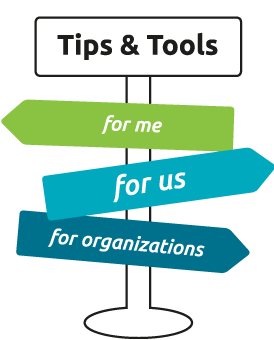Tips & Tools

8/19: The Dutch Healthy City
In the Dutch magazine ‘Verkeer in Beeld’(19#3) I wrote this article.
More steps made by young and old requires enough facilities, temptations and support. The second article in a series of three. My ‘warming up’ to Walk21, the world congress in Rotterdam (7-10 October 2019).
Different hierarchy
Achieving a healthy environment means applying a different traffic hierarchy and making a turnaround in other existing concepts. Not the car in the first place, followed by collective transport and cycling. From now on the walkers should be number one! Not only focus on journeys from A to B, but also pay attention to sojourning, exercising and walking experiences. Offering solutions for the current mismatch: where it is easy to walk, people often remain seated. Where people go on foot, they do not get enough space.
Pavements clean and free
Research among cyclists, car drivers and pedestrians repeatedly shows they have a strong preference for their own separate space. In practice, this is not always achievable. Because pedestrians usually do not (yet) fully participate in the decision-making process, their interests often fall by the wayside. Construction and proper management of walking routes and adequate maintenance of sidewalks is therefore the first thing needed. Ensuring that street tiles are at level, that routes are logical and sufficiently seductive.
Growing awareness
Professionals have to find bottlenecks and solutions from users themselves. For many people, walking is so self-evident, or not at all, that awareness is often lacking. Getting higher on agendas is only possible in cooperation with other parties involved. I describe a few examples for young and old.
Children
A healthy children's environment is not only about money, but above all about support and cooperation. Ingrid Bakker, associate lecturer at the Dutch Windesheim University of Applied Sciences says: "Try to work together with parents, children, residents and schools. Children must be able to walk independently and safely from A to B". Her advice: "Involve children in designing routes through the neighborhoods. A better crossing here, a more attractive path there".
Sports Gardens in the middle
In The Hague, sports facilities, right in the heart of neighborhoods, ensure a healthier youth. The facilities are used intensively. Teachers see that sporting pupils are able to concentrate better. They become more fit. The first 'Sporttuin' (‘Sports Garden’: 'sports field' and 'playground') was created in 2005 in the Schilderswijk. Duindorp, Moerwijk and Transvaal followed later. These neighborhoods have a population with above-average weight.
Success
What made the Sports Gardens a success? In the first place because two motivated initiators (the gyms teacher and the director of a primary school) set the flywheel in motion. In addition: children come via simple and short routes, independently, on foot. Supervisors and coaches are present on location. Neighborhood representatives, sports clubs and the municipality now work together.
More healthy
Another successfull program we see in Amsterdam. There the number of obese children between the ages of 2 and 18 has decreased. Between 2012 and 2017 the number went from 27,000 to 24,500. Thanks to a package of measures aimed at individual children and their environment. Going to school on foot or by bike at least twice a week is part of the effort. More exercise, good food, a good night's sleep. Parents, brothers, sisters, the school: they are all involved in the intensive coaching programme.
Alderman as an icon
An important success factor is the organization method: keeping it as light as possible! Amsterdam's efforts take place as much as possible within existing organizations and with existing resources. A lot of energy gets lost in a special project staff with its own project budget. Bureaucracy then takes a lot of time. Moreover, it was an alderman, Eric van der Burg, who enthusiastically initiated, promoted and supported the program. He set the example by running a lot himself and continuously stimulating others to walk. In a retrospective, he says: "I have been an alderman for eight years and I am most proud of this result of less obesity".
Walking together
For healthy ageing, walking is important. Some organizations take the issue into account in their work, such as associations for the elderly and organizations representing people with disabilities. Scattered across the country, the number of walks together is increasing, encouraged by face to face contacts or social media.
Fall prevention for seniors
In the Netherlands, many of the 40,000 pedestrians who fall every year are elderly. They form a group that benefits greatly from perfect routes directly from their front door. They should be able to deal with risks sufficiently. Courses like 'How to Fall' help seniors to prevent falling. In many municipalities there is an increasing demand for more facilities to rest, such as benches, every few hundred meters.
Date: 28 August 2019
Overview Blogs- News autumn 2024
- my Ebook for free now
- 3/20 'Being outside crucial in corona times'
- 2/20: Parkrun: getting overweight people walking
- 2/20: Ban on e-peds in some countries, good for walkers
- 1/20: Walker picking up street garbage, wins Green Top 100
- 9/19 Sensor city and our feet
- 8/19: The Dutch Healthy City
- 7/19: Putting Pedestrians First
- 3/19: Doctors walking their patients
- 1/19: People do buy my book
- 11/18: My book is born 2
- 9/18: My book is born
- 7/18: Temporary ban electrical steps
- 6/18: Amsterdam children healthier thanks to local policy
- 5/18: New tip, new tool
- 4/18: Walk-to-Work Day
- 3/18: Happy Mobility
- 2/18: Dutch elections: more benches in the streets
- 1/18: On foot in the new year
- 10/17: 'Embedded' with the Placemakers
- 9/17: Positive reactions on my website
- 7/17: Cyclists` advocacy for walkers
- 5/17: Walk to Work Day successful
